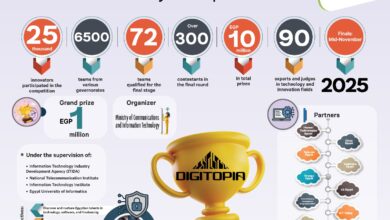Beyond Algorithms: How AI Solutions Are Designed in Contact Centers

Artificial Intelligence is no longer just mathematical algorithms or complex software techniques; it has become an integrated journey that begins with understanding real challenges and ends with practical solutions that enhance performance and deliver added business value.
Particularly in the contact center sector, AI stands out as a strategic tool capable of reshaping the customer experience (CX) and ensuring operational continuity in the face of increasing pressures.
Phase 1: Defining the Problem and Data Quality
The first phase in any successful AI project is recognizing the specific problem the center needs to solve.
This might be reducing caller waiting time, increasing first call resolution (FCR) rates, or even improving the prediction of customer behavior and emotions during a conversation.
This step can only be achieved through in-depth discussions with clients and studying the nature of the available data.
Even the clearest challenges cannot be addressed technically without accurate, high-quality data.
Phase 2: The Multidisciplinary Team
Once the problem is precisely defined, the multidisciplinary team steps in.
The success of AI in contact centers relies on the integration of several roles:
Data Analysts: Ensure the information flows correctly.
Data Scientists: Experiment with different models to achieve optimal results.
AI Engineers: Integrate these models with automated response systems.
User Experience (UX) Designers: Ensure the tools are easy for both agents and customers to understand.
Technical Operations Experts: Monitor model performance as call volumes increase to ensure stability and resilience.
Practical Challenges: The Balance Between Tech and User Experience
Real-world experiences show that obstacles aren’t always purely technical. In one case, an AI system struggled to analyze calls due to poor recording quality, which affected the accuracy of the results.
The solution wasn’t just modifying the algorithm, but setting new standards for using standardized headsets and establishing a more disciplined acoustic environment inside the contact centers.
These simple adjustments quickly reflected on the system’s efficiency, confirming that the success of smart solutions depends on a balance between technology and user experience.
It’s clear that data is the backbone of any AI project. In contact centers, sources vary between call recordings, emails, and text chats across different applications.
This provides massive opportunities for training models and developing advanced solutions.
However, the quality and context of the data remain the crucial factor determining the effectiveness of any intelligent customer service system.
In conclusion, AI innovations in contact centers are not just a matter of algorithms or hardware; they are the result of close collaboration between business analysts, developers, designers, and engineers.
True success lies in the ability to translate operational needs into practical, user-friendly technical solutions that achieve customer satisfaction and support business continuity.
This integration of design, technology, and data is what creates the difference between a traditional system and an AI tool capable of driving a paradigm shift in the contact center industry.







